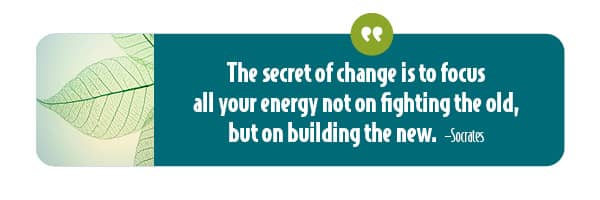Whether you are aware of it or not, dysregulated emotions can hijack your energy and behavior, causing a distorted view of life's experiences.
The inner chatter driven by anxiety, emotional dysregulation, and knee-jerk reactions rarely creates good results. Understanding what's happening in your brain and learning self-regulation can give you calmer responses, reduced anxiety, and enhanced well-being.
Estimated reading time: 4 minutes
Heartmanity is proud to partner with outstanding companies that we wholeheartedly recommend so this post may contain affiliate links. You can read our full disclosure here.
Why Is Emotional Regulation Important?
Emotional regulation is crucial for today's unrest and ongoing challenges. When we self-regulate, we use self-soothing techniques to engage the parasympathetic nervous system. Learning to self-calm and soothe anxiety and frustration or refrain from lashing out in anger are vital parts of emotional intelligence, and well worth the effort.
When we self-soothe, we are able to quiet the fight-flight-freeze reaction and utilize logic for wiser responses. And our daily behavior and decisions largely determine the quality of our life and future.
However, a perceived threat is often invoked by a perception based on past experiences and can be intensified through a charged emotion. Our response depends on how the brain gathers information and turns on the central alarm system. Whether or not we are experiencing healthy stress or setting off our threat response depends on how we perceive the situation, person, or experience.
With a practice of mindfulness, we can better discern our daily experiences more accurately, handle challenges more easily, and emotionally regulate our strong feelings, which enables us to respond instead of react.
If you're ready to dig in and up-level your EQ skills, get our emotional intelligence course!
Self-Awareness and Mindfulness Is a Daily Practice
We all have very full lives—who has time to spend hours a week learning a new skill? Not me. However, a lack of time can keep us from gaining what we need to be more effective and happier.
That's why introducing micro-habits and small behavioral changes is essential. A micro-habit can be as simple as grabbing a drink of water to chill out before responding to an email or taking three deep breaths.

A Step-by-Step Process to Calm Yourself
The good news?
You can also learn a simple, step-by-step practice to calm yourself, requiring only a couple of minutes at a time.
Don't underestimate the power of simple yet targeted actions capable of turning anxiety into inner peace. Even journaling for 15 minutes can make a big difference.
The first step of any change is heightened self-awareness. So mindfulness begins with a practice of self-awareness.
Before you try the step-by-step process to regulate emotions below, observe yourself for one week.
- What are you thinking that may increase anxiousness?
- In what small ways do you deny yourself what you need?
- Do you push aside emotions guiding you to a self-care action?
Don't change anything just yet; raise your awareness. Notice with curiosity.
Next, introduce self-acceptance.
If your inner critic is loud and harsh, it may feel too vulnerable to allow your feelings to surface. Listening to your emotions needs to be supported by a safe inner space. So next, practice self-compassion. Each and every time your mind criticizes or judges you, say stop. Then replace negative self-talk with a positive, more encouraging inner response.
For a comprehensive understanding of emotional intelligence, read our article, "What Is Emotional Intelligence?"
Self-Soothing and 5 Practical Steps to Calm Yourself
Now, if you're ready to begin to understand your emotions and eliminate that short fuse of anger or lingering anxiety, practice the following five steps to support you. This vital process will enhance your life and give you greater emotional well-being when utilized.
STEP 1: Identify your feeling.
What are you feeling? Name the emotion. Are you sad, excited, anxious, resentful, angry, or jealous? Just by naming what you're feeling, emotions will slow down and subside. Or is your inner world a whole cluster of emotions clashing together? Breathe in and out slowly. Pull them apart and see if you can name each one. Arrange them as you would organize children in a single file for a field trip. When you haven't listened to your emotions for a long time, they can be compressed together, or you can have difficulty recognizing them. Be patient.
Related reading: "How to Resolve Conflicting Emotions with Emotional Intelligence."
STEP 2: Ask how you would like to feel.
Once you've spent some gentle discovery time with your emotions and fully identified and felt them, next figure out how you want to feel.
It's not enough to feel negative emotions; they tell you what action you need to take to feel better. If you're anxious, perhaps something is bothering you that needs resolution. If you're sad, maybe a friend hurt your feelings and it would help to have a conversation or set a healthy boundary.
So how would you like to feel?
This simple question can provide clues as to what you need to restore inner peace.
STEP 3: Shift your perception to support how you would like to feel.
Our emotions often cloud our perceptions. What perception would you need to have to feel better?
For instance, if your friend hurt your feelings, instead of thinking they don't care about you, shift your perception to: "They probably didn't even realize they hurt me. I know they care about me, so I need to let them know."
STEP 4: Take one action to change the way you feel.
Now, it's time to take action. Talk to that friend. Give yourself self-care if you've been working too much. Or solve that inner conflict by taking steps to fulfill an important goal or champion a value that you've been compromising.
Each small step we take to be our own advocate increases positive feelings and builds healthier self-esteem.
STEP 5: Repeat the process until emotional regulation is on auto-pilot.
Do you want to know how to translate these steps into a real-life situation? Click here to go right there!
Self-Awareness and Emotional Regulation in Action through Examples!
Let's translate the steps above through an example.
| Your spouse is working too much and not making your relationship a priority. Even when home, he/she works on their iPad. |
STEP 1: Identify your feeling. You might feel lonely and resentful.
STEP 2: Ask how you would like to feel. You want to feel loving toward your spouse. You would also like to have a fun, close relationship.
STEP 3: Shift your perception to support how you would like to feel. Think of what you are grateful for; appreciate the financial security he/she provides by working long hours. Call to mind the sweet gestures that your partner has shown you over the past weeks, even in the midst of a hectic work schedule. For instance, they text you on their way back from work to see if you need anything from the grocery store.
STEP 4: Take one action to change the way you feel. Thank your spouse or partner for how hard he/she works. Then tell them how much you miss them. Then request a regular date night to nurture your relationship.
STEP 5: Repeat until the process becomes a habit!
Make a practice of these steps, and you'll be well on your way to emotional fitness and creating a life you love with meaningful relationships. Stay encouraged. It only takes mindful micro-actions throughout your day or week to increase happiness and inner peace.
Related reading: "The Power of Habit: One Habit Can Transform Your Life."
FREE emotional fitness skills
Check out Heartmanity's free webinar on emotions, or check out other free resources.









